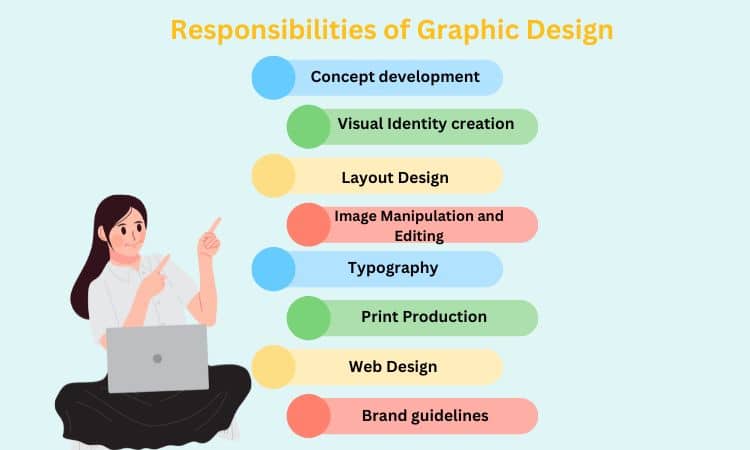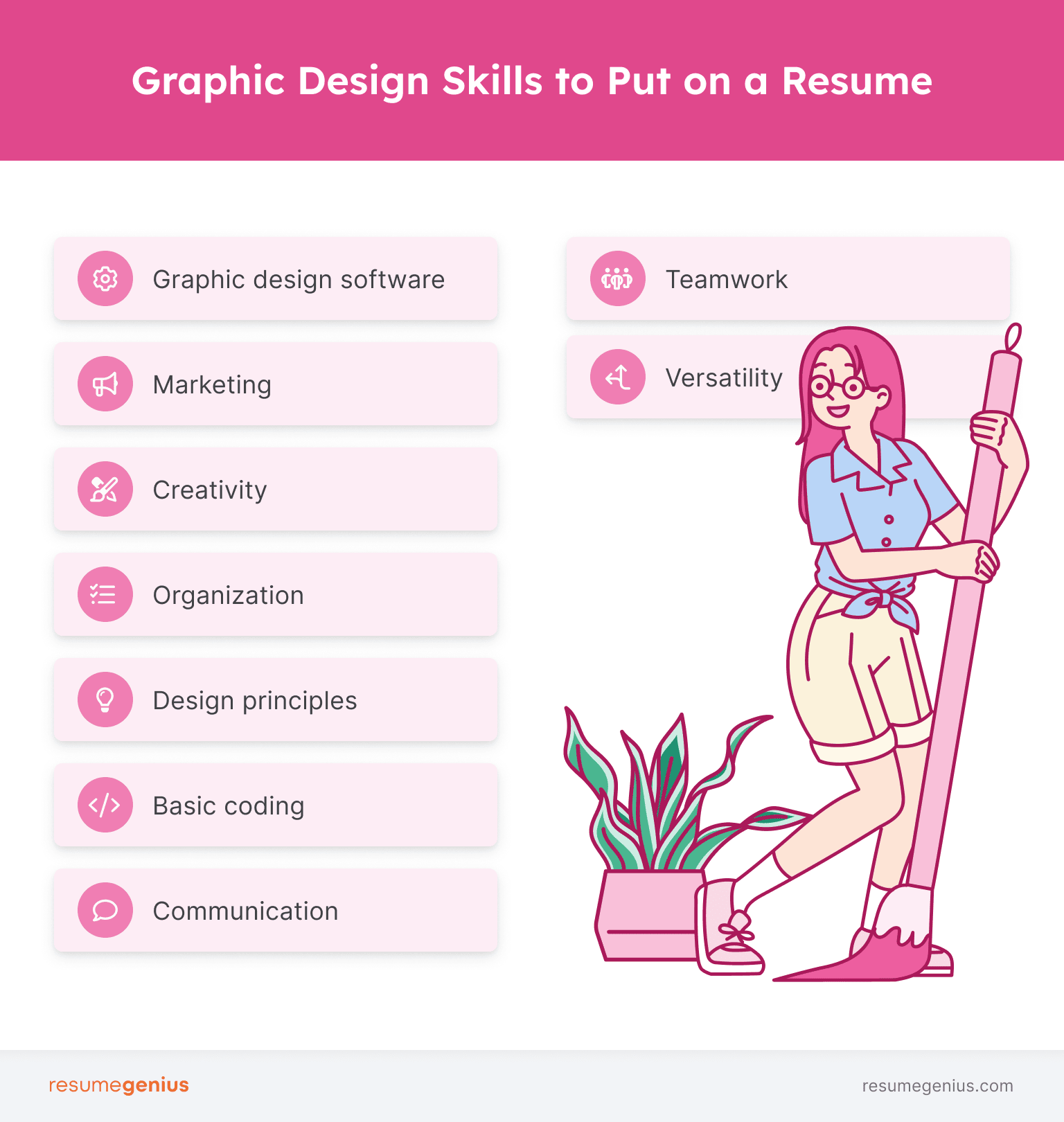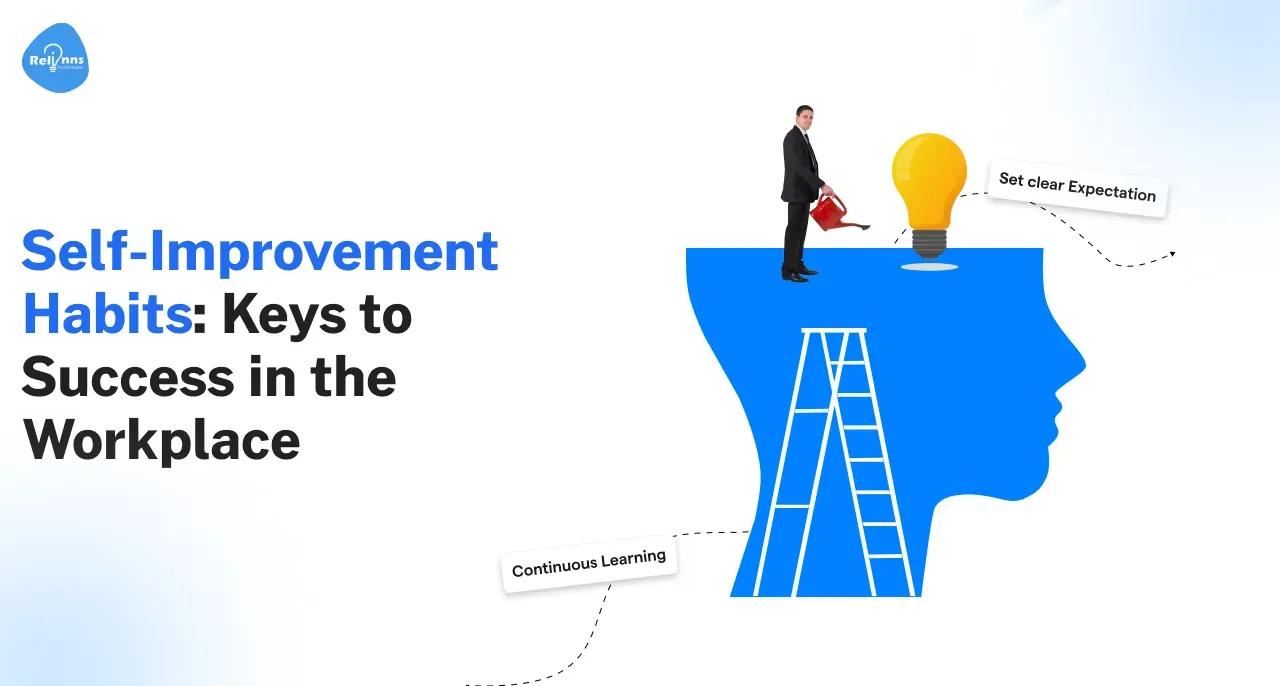How to build a career as a graphic designer
Date
Jul 09, 24
Category
Career Development
- Introduction
- Understanding the Role of a Graphic Designer
- Essential Skills and Tools
- Education and Training
- Tips for Building a Graphic Designer Professional Resume
- Building a Portfolio
- Gaining Experience
- Networking and Community Engagement
- Navigating the Job Market
- Continuing Education and Professional Development
- Conclusion
- Frequently Asked Questions (FAQs)
Table of content

Introduction
Graphic design is not just about pretty pictures. It’s a battlefield.
Every day, designers toil ceaselessly to create visuals that are not only pleasing to the eye but also solve complex problems. Their creations greatly impact the success and failure of the brand.
Many people overlook the importance of this role. Think again if you think graphic design is just about visually pleasing images.
A graphic designer career is about communication, psychology, and strategy all rolled into one. This guide is your starting point to mastering this art and having a fast-growing career as a graphic designer.
Here, we'll explore how to build a graphic designer career, equipping you with the tools and knowledge to turn a creative passion into a professionally successful career.
Understanding the Role of a Graphic Designer
Graphic design is more than just creating logos and making things look good. It's about solving problems and communicating ideas effectively. Graphic designers are crucial in shaping how we see and interact with the world around us.
Let’s begin with what a graphic designer career really entails.

What is Graphic Design?
Graphic design is a craft where visual content is used to communicate messages. Designers use layout, visual arrangement techniques, text, and images to address specific user needs. They carefully arrange elements in interactive designs to improve how users interact with them, ensuring a better overall experience.

Types of Graphic Design
There are several areas within graphic design, each with its own set of specialties:

Web Design: A graphic designer career in web design focuses on the aesthetics and functionality of websites, ensuring a seamless user experience that is both visually appealing and easy to navigate. This includes layout design, color scheme selection, and the integration of graphics and multimedia.
Branding: This involves creating a unique image and identity for a brand through logos, color palettes, typography, and more. In their branding graphic designer career, designers work to establish a strong, consistent, and recognizable brand presence across different marketing and communication channels.
Advertising: A graphic designer career in advertising includes creating visual concepts that inspire, inform, and captivate consumers. This includes designing layouts for print ads, posters, billboards, and digital advertisements. Their work aim is to increase engagement and sales through compelling visual storytelling.
User Interfaces (UI): UI designers specialize in designing the interfaces for software and applications, focusing on the look and feel of the software products. They ensure the interface is attractive and easy to look at for a smooth user experience.
Key Responsibilities
The key responsibilities of a graphic designer are as follows:
Concept Development: Graphic designers start projects by understanding the client’s needs and objectives. They come up with creative visual ideas that match the project's objectives.
Visual Creation: Using design software, designers craft and manipulate graphic elements to produce a final visual that matches the audience. This involves paying attention to design details like space, alignment, and colors.
Collaboration: A graphic designer career involves collaborating with other teams of creatives, marketers, and tech teams. They must effectively communicate their vision and use feedback to refine their designs. Collaboration is crucial in projects where multiple stakeholders are involved.
Revision and Optimization: Graphic designers refine their work based on feedback after presenting initial concepts. They adjust designs to meet the client’s expectations better and ensure the final designs are high-quality and effective.
This role blends creativity with strategy, making graphic design a dynamic and essential field.
Essential Skills and Tools
Artistry and technical expertise are necessary to thrive in graphic design. A graphic designer must navigate various challenges, from crafting visually appealing designs to meeting client specifications.
Let's break down the crucial skills and tools needed for a successful career in graphic design.
Essential Skills for Graphic Designers

The essential skills for a graphic designer career include typography, color theory, and layout principles. These are briefly explained as follows.
- Typography: Selecting and combining fonts is critical for creating clear and effective designs.
- Color Theory: Understanding colors and their interaction is vital for making designs stand out and convey the right message.
- Layout Principles: Effective layout is key to making information accessible and visually engaging.
Key Technical Skills
Along with the basic knowledge, the graphic designer career includes the following technical skills.
- Software Proficiency: Graphic designers must be adept at using industry-standard software like Adobe Photoshop, Illustrator, and InDesign. Skills in web design tools such as Sketch or Figma are also beneficial.
- Print and Digital Design: Designers should know the requirements and differences between print and digital media to create versatile designs.
Important Soft Skills
Soft skills are as important for a graphic designer career as technical skills.
- Communication: Clear communication is essential to understand client needs and effectively present design concepts.
- Problem Solving: Designers often need innovative solutions to meet design deadlines within time constraints.
- Time Management: Efficient time management is crucial, especially when juggling multiple projects.
Developing these skills and mastering these tools are fundamental for any graphic designer looking to make a graphic designer career. This combination allows the designers to deliver compelling and effective visual communications.
Suggested Reading : Guide to Developing soft skills for Interviews
Education and Training
Education and training form the backbone of a successful career in graphic design. The right educational path can make a significant difference whether you are just starting out or looking to enhance your skills.
Let's examine the different educational options and why they are important.
Formal Education
Graphic Design Degrees: Many universities offer bachelor's degrees in graphic design, which provide a comprehensive understanding of design principles, history, and applications. These programs also often include business, marketing, and communications courses, which are valuable in a design career.
Technical Programs: Many schools and colleges offer certificates in graphic design to those looking for a shorter educational path. These programs focus on the practical skills needed for entry-level positions.
Self-Learning and Online Courses
There are numerous self-learning options available for those who don't wish to take the formal education route.
Online Learning Platforms: Websites like Coursera, Udemy, and LinkedIn Learning offer courses on every aspect of graphic design, from beginner to advanced levels. These courses are great for learning specific skills or software and adapting to new technologies and methodologies.
Workshops and Webinars: Many professional organizations and design communities host workshops and webinars that can enhance your skills and knowledge. These also provide excellent networking opportunities.
Tips for Building a Graphic Designer Professional Resume
Here are some tips for building a graphic designer professional resume that will impress employers and make you stand out.

- Highlight Key Skills: Include essential graphic design skills like Adobe Creative Suite, typography, layout, and color theory. Showcase your understanding of design software and tools.
- Showcase Your Portfolio: Provide a link to your online portfolio. Highlight projects that demonstrate creativity and problem-solving skills.
- Relevant Experience: Detail your professional experience, emphasizing roles and projects relevant to graphic design. Include internships and freelance work.
- Education and Certifications: List your educational background, especially in design-related fields. Include any certifications such as Adobe Certified Expert (ACE).
- Awards and Recognition: Mention any awards or recognitions to set your resume apart, showcasing your excellence in graphic design.
Building a Portfolio
Building a solid portfolio is a crucial step for any graphic designer career, whether you’re seeking employment, freelancing, or simply showcasing your work.
A well-crafted portfolio displays your skills, thought process, and versatility in handling various design challenges. Let’s discuss how to create a compelling graphic design portfolio.
What to Include in Your Portfolio
Designers often doubt what to include in their portfolios. Use the guidelines below to know what to include in your portfolio.
- Diverse Projects: Include various work, like branding, web design, advertising, etc., to showcase the range of your abilities.
- Process Work: Showcasing your process from concept to completion can demonstrate your problem-solving skills.
- Personal Projects: Include your personal projects that highlight your creativity and passions for the field.
Tips for Showcasing Your Work
Here are some tips to remember while selecting the works to include in your portfolio.
- Quality Over Quantity: Choose your best work to include in your portfolio. It’s better to have a few outstanding pieces than many mediocre ones.
- Tailor Your Portfolio: Customize your portfolio for your target job or client, highlighting relevant work.
- Online Presence: Create a professional online portfolio on platforms like Behance or a personal website. Make sure it is easy to navigate and visually appealing.
Maintaining Your Portfolio
Maintaining a portfolio is as important. Keep these tips in mind on how to maintain your portfolio.
- Regular Updates: Continually update your portfolio as you complete new projects and improve your skills.
- Feedback: Seek feedback from peers and professionals to refine your presentation and work.
- Reflect Your Brand: Ensure your portfolio consistently reflects your personal brand and design style across all pieces.
A strong portfolio opens doors to new graphic designer career opportunities and proves a designer’s ability to communicate visually. You can impress potential employers or clients by carefully selecting and presenting your work.
Gaining Experience
Gaining practical experience is essential in the field of graphic design. It helps you apply your theoretical knowledge in real-world scenarios and prepares you for professional challenges. Here are key ways to gain valuable experience:
Internships
Internships provide a straightforward route to gaining practical experience in a structured environment that emphasizes learning. This setting allows you to apply what you've learned theoretically in a real-world context. Internships help you understand and adapt to professional scenarios more effectively. Working under seasoned designers, you can understand day-to-day operations and client interactions, which are invaluable for your professional growth.
Freelancing
Starting freelance projects allows you to work on a variety of tasks and with different clients, building your adaptability and portfolio. Platforms like Upwork, Freelancer, and Fiverr can help you find projects that match your skills and interests.
Design Competitions
Participating in design competitions is a great way to challenge yourself. Winning or simply participating can enhance your portfolio and expose you to feedback from experienced professionals in the field.
Volunteering
Offering your design services to non-profits or local businesses can build your portfolio and benefit your community. This experience can also showcase your initiative and versatility to potential employers.
Each of these opportunities enhances your skills and expands your professional network, which is crucial for advancement in graphic designer career.
Networking and Community Engagement
Networking and community engagement are essential for growth in the graphic designer career. Building a strong professional network can open up new opportunities, provide mentorship, and offer support throughout your career. Here’s how you can effectively engage with the design community:
Join Professional Organizations
Joining organizations like ADI (Association of Designers of India) or the IDC (India Design Council) can connect you with like-minded professionals. These groups often host events, workshops, and conferences that are perfect for networking and learning.
Attend Industry Events
Whether they are local meetups, national conferences, or design workshops, attending industry events can help you meet other designers, learn about the latest trends, and expose you to new ideas and technologies.
Utilize Social Media and Online Forums
Platforms like LinkedIn, Behance, and Dribble are essential for graphic designers. They allow you to showcase your work, connect with other designers, and find graphic designer career growth opportunities. Participating in online forums and discussion groups can also help you gain insights and advice from experienced professionals.
Collaborative Projects
Engaging in collaborative projects, whether through a professional setting or informal groups, can enhance your skills, expand your portfolio, and deepen your connections within the design community.
By actively participating in these networks and communities, you can enhance your visibility in the design field and keep you informed about opportunities and industry developments.
Navigating the Job Market
Navigating the job market as a graphic designer involves more than just sending out resumes; it requires a strategic approach to stand out in a competitive field. Here’s how to effectively approach your job search:
Crafting an Effective Graphic Designer Resume and Cover Letter
Your graphic designer professional resume should highlight your design skills, projects, and education, while your graphic designer resume cover letter should tell a captivating story about your design journey.
There is an ongoing trend of making graphic designer resumes creative. Include infographics in your resume if you decide to go with graphic resumes.
Tailor each application to the specific job, emphasizing how your skills align with the job requirements.
Building a Strong Portfolio
A well-curated portfolio is your most powerful tool in job hunting. It should showcase your best work and reflect your unique style and skills. Include a variety of projects that demonstrate your versatility and ability to solve design problems.
Leveraging Your Network
Utilize your professional network for job leads and referrals. Often, jobs are filled through connections before they’re ever advertised. Stay active in design communities and maintain relationships with classmates, instructors, and colleagues.
Preparing for Interviews
Be ready to discuss your design process, how you handle feedback, and how you approach challenges. Prepare to showcase your portfolio and discuss specific projects in detail, focusing on how your design decisions align with business objectives.
By focusing on these elements, you can improve your visibility in the job market and increase your chances of landing the right graphic design position.
Suggested Reading : 10 Tips to Ace Your Job Interview
Continuing Education and Professional Development
Continuing education and professional development are crucial for staying relevant and advancing in graphic design. As design trends and technologies evolve rapidly, ongoing learning is essential.
Stay Updated with Industry Trends
Regularly reading design blogs, following industry leaders on social media, and subscribing to design magazines can inform you about the latest trends and best practices.
Pursuing Advanced Courses and Certifications
Consider taking advanced courses or obtaining certifications in specific areas, such as UI/UX design, motion graphics, or digital illustration. These can deepen your expertise and make your graphic designer career more satisfying.
Attending Workshops and Conferences
Workshops and conferences provide learning opportunities and allow you to network with other professionals. They can be invaluable for gaining insights into new tools and techniques.
By focusing on your professional growth, you keep your skills and knowledge up-to-date with the latest trends in graphic design. This boosts your creativity and improves your graphic designer career opportunities.
Conclusion
In conclusion, building a successful career in graphic design requires a mixture of creativity, technical skills, and continual learning.
From mastering essential design tools and techniques to developing a strong portfolio, every step should aim to refine your abilities and improve your personal brand.
Networking and engaging with the community are also vital, opening doors to new opportunities and collaborations that can propel your career forward.
Remember that the graphic design ecosystem is ever-evolving, so staying updated with the latest trends and technologies is crucial.
By combining formal education with hands-on experiences and constantly trying to enhance your skills through professional development, you give yourself the necessary tools to have a successful graphic designer career.
Let your passion for design drive you, and let your work reflect your unique perspective and skills. With dedication and persistence, the possibilities in graphic design are limitless.Flexibility and persistence are crucial traits in this journey, enabling individuals to adapt to challenges and pursue opportunities with resilience. With determination and a growth mindset, you will find best career opportunities for you.Stay proactive and adaptable, and you'll find that growth and success are within your reach.In today's competitive world, enhancing your skills and cultivating strong communication qualities are essential for career growth and personal fulfillment.
Relinns Technology offers an excellent platform to achieve these goals. At Relinns, you can discover a wealth of career opportunities designed to help you excel. The company is dedicated to helping you enhance your skills, particularly in communication, through hands-on projects and continuous learning. By joining a team of passionate professionals and working on cutting-edge technologies, you will not only contribute to innovative projects but also hone your communication capabilities.

Frequently Asked Questions (FAQs)
How can I make my graphic designer resume creative?
Craft a stand-out graphic design resume! Use a clean layout with a touch of color and incorporate creative elements like icons or infographics. Highlight your skills with data visualization and showcase past projects with strong verbs and visuals. Keep it relevant to the job and ensure readability. Don't forget your portfolio link!
What key points should I cover in a graphic designer resume cover letter?
In your graphic designer resume cover letter, begin with a compelling introduction that captures your interest in design. Outline your most relevant experiences and how they align with the specific role. Mention specific tools or projects you’ve excelled in and how your creative vision can contribute to the prospective employer’s goals. Close with a strong conclusion that invites further discussion or an interview.
What should I avoid in my graphic designer professional resume and cover letter?
Avoid overcrowding your graphic designer professional resume and cover letter with too much text or overly complex design elements. Stick to a clean, professional layout and focus on content that speaks directly to your qualifications and the job requirements. In the cover letter, avoid generic statements and focus on specific examples demonstrating your skills and contributions to past projects.





